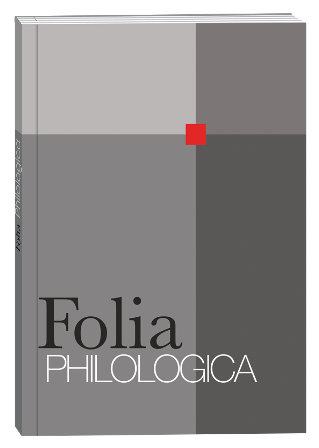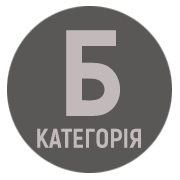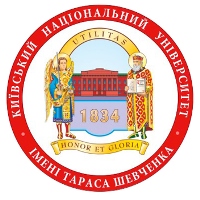TEXT-IMAGE RELATIONS IN TRADITIONAL AND POSTMODERN PUBLIC SERVICE ADVERTISING (BASED ON ENGLISH PSA ON COVID-19)
DOI:
https://doi.org/10.17721/folia.philologica/2021/1/8Keywords:
public service advertising, multimodality, intermodal cohesion, COVID-19Abstract
The article is dedicated to the analysis of text-image relations as of two different semiotic modes within the framework of multimodal studies in the traditional and postmodern English public service advertising (PSA) on COVID-19. The tendency towards image-centricity and linguistic compression in the design of ads has influenced intermodal cohesion in PSA posters. Traditional PSA is advertising based on explicit cohesive ties and semantic redundancy. Intermodal cohesion in traditional PSA builds on hierarchical relations of elaboration and linear relations of illustration. Postmodern PSA is a semiotically minimalistic verbal-visual unity, multimodal small-format text with clearly expressed semantics and symbolism. Postmodern PSA offers ambiguous and minimalistic unity of verbal and visual signs that is, at first sight, incongruent, incoherent. The recipient establishes intermodal cohesion through intersemiotic inferences. Intermodal cohesion in postmodern visual-centric PSA is built mainly on the relations of extension or spatial-temporal / causal enhancement, as they lead to incongruency and multimodal tension, which intrigue the recipient and involve them more actively in the process of decoding of the advertising’s message. On the spatial syntax level, linear relations of anchorage or alteration are characteristic for postmodern PSA. On the rhetorical-logical level, relations based on coincidental allusive ties predominate in postmodern PSA. Postmodern advertising is less directive and explicit than traditional advertising, opting for a less direct communication style. The specific nature of postmodern image-centric PSA is predetermined by multimodal and rhetorical complexity, semantic ambiguity, incongruity, and pragmatic under-specification. Interpretation of multimodal PSA texts depends on denotative and connotative meanings of the visual and verbal components, recipient’s general and culture-specific knowledge, and peculiarities of PSA discourse. The theoretical and methodological framework of the study combines works on multimodality and text-image relations (J. Bateman, G. Kress & T. van Leeuwen, H. Stöckl, H. Caple, R. Martinec & A. Salway, L. Makaruk, V. Yefymenko), as well as on advertising discourse (H. Stöckl, S. Gieszinger, S. Molnar, S. Bulmer & M. Buchanan-Oliver).
References
Petrenko, D. A., Likhachev, E. V., & Chernyshova, M. V. (2020). Linguistic Means in Image of COVID-19 (German Political Discourse in Media). Nauchnyi Dialog, 7, 194–209. https://doi.org/10.24224/2227-1295-2020-7-194-209. (In Russian).
Semino, E. (2020). “Not Soldiers but Fire-fighters” – Metaphors and Covid-19. Health Communication, 36(1), 50–58. https://doi.org/10.1080/10410236.2020.1844989.
Dankova, N. S., & Krekhtunova, E. V. (2020). Media Representation of the Pandemic: a Metaphorical Image of War (based on American Newspapers). Nauchnyi Dialog, 1(8), 69–83. https://doi.org/10.24224/2227-1295-2020-8-69-83. (In Russian).
Pervukhina, S. V., & Rood’, E. E. (2020). Means of Expression in the Newspaper Style (on the Example of Coronavirus Articles). Humanitarian Researches, 75(3), 98–104. https://doi.org/10.21672/1818-4936-2020-75-3-098-104. (In Russian).
Kupina, N. A. (2020). Coronavirus Pandemic: Metaphoric Diagnostics of Anxious Reality in the Media Texts. Izvestia of Ural Federal University. Series 1. Issues in Education, Science and Culture, 26(3), 5–13. https://doi.org/10.15826/izv1.2020.26.3.044. (In Russian).
Serebriakova, S. V., & Milostivaya, A. I. (2020). Linguistic Portraiting of the Covid-19 Pandemics in Russian and German Press. Humanitarian Sciences and Legal Studies, 1, 202–209. (In Russian).
Gulyaeva E. A., Klyukina Yu. V., Davydova E. I., & Mordovina T. V. (2020). Representation of the Concept "Pandemic" in Modern English-Language Media. The World of Science, Culture, Education, (6 (85)), 616-619. (In Russian).
Kameneva, V. A., Rabkina, N. V., Araeva, L. A., Gorbacheva, O. N. (2018). Nomenclature of Visual Stylistics: Visual Stylistic Means in Social Advertising. Political Linguistics, 3, 96-105. (In Russian).
Karataeva, M. V. (2014). Semiotics of Virtual Communication (based on the modern English language). Thesis for a Candidate degree in Philology. Taras Shevchenko National University of Kyiv, Kyiv. (In Ukrainian).
Tsyliuryk, T. V. (2016). Discourse of English Virtual Counteradvertising as the Object of Linguistic Research. Young Scientist, 8(35), 313-318. (In Ukrainian).
Biliuk, I. L. (2016). City Branding in English Communication: Verbal and Visual Components. Thesis for a Candidate degree in Philology. V. N. Karazin National University of Kharkiv, Kharkiv. (In Ukrainian).
Kostromina, T. A. (2018). Fascination in Creolised Tetxs in English-Language Social Advertising. Verhnevolzhski Philological Bulletin, 3, 145-154. (In Russian).
Kress, G., and van Leeuwen, T. (2001). Multimodal Discourse: The Modes and Media of Contemporary Communication.
Bateman, J.A. (2014). Text and image. A Critical Introduction to the Visual/Verbal Divide.
Stöckl, H. (2004). In between Modes. Perspectives on Multimodality, 9–30. https://doi.org/10.1075/ddcs.6.03sto.
Stöckl, H. (2009). The Language-Image-Text – Theoretical and Analytical Inroads into Semiotic Complexity. AAA: Arbeiten Aus Anglistik Und Amerikanistik, 34(2), 203–226. http://www.jstor.org/stable/26430902.
Yefymenko, V. A. (2016). Correlation between Visual and Verbal Elements in Fairy-Tale Narrative. Taras Shevchenko National University of Kyiv Bulletin, Philology, 1(49), 34–38. (In Ukrainian).
Yefymenko, V. (2017). Text-image Relationships in Contemporary Fairy Tales. Linguistics Beyond and Within, 3, 216–228.
Makaruk, L. (2018). Multimodality and Polycodeness in Modern Linguistic Studies: Schools, Figures and Approaches. Current Issues of Foreign Philology, 9, 133–142. (In Ukrainian).
Stöckl, H. (2020). Multimodality and Mediality in an Image-Centric Aemiosphere – A Rationale. In C. Thurlow, C. Dürscheid, & F. Diémoz (Eds.), Visualizing Digital Discourse: Interactional, Institutional and Ideological Perspectives, 189–202.
Stöckl, H. (2008). Was hat Werbung zu verbergen? Kleine Typologie des Verdeckens. In: Pappert, S., Schröter, M., Fix, U. (eds.). Verschlüsseln, Verbergen, Verdecken, in öffentlicher und institutioneller Kommunikation, 171–196.
Stöckl, H., Caple, H., & Pflaeging, J. (Eds.) (2020). Shifts towards Image-Centricity in Contemporary Multimodal Practices: Insights from Social Semiotic Approaches.
Gieszinger, S. (2000). Two Hundred Years of Advertising in The Times. The Development of Text Type Markers. In: Ungerer, F. (ed.) English Media Texts Past and Present, 85–109.
Stöckl, H. (2017). The Multimodal Enigmatic Advertisement: "En-riddling" as a Rhetorical Strategy in Commercial Persuasion. In Handler, P., Kaindl, K., & Wochele, H. (Eds.), Ceci n`est pas une festschrift, 69–81.
Martinec, R. and Salway, A. (2005) A system for image-text relations in new (and old) media. Visual Communication, 4(3). 337–372.
Makiedonova, O. D. (2017). Linguostylistic Organization and Pragmatic Functioning of the English Advertising Discourse. Thesis for a Candidate degree in Philology. Zaporizhzhia National University, Zaporizhzhia. (In Ukrainian).
Kazakova, L. P. (2013). Psychological Patterns of Public Service Advertising Perception. Bulletin of the Moscow State University of Publishing, 8, 181–194. (In Russian).
Dzamic, L. (2001). No-Copy Advertising.
Molnar, S. (2018). Advolution. A Systemic Functional Perspective on the Diachronic Development of Advertising since the 17th century. (Unpublished doctoral dissertation). University of Salzburg, Salzburg.
Caple, H. (2008). Intermodal Relations in Image-Nuclear News Stories. In Len Unsworth (ed.), Multimodal semiotics. Functional analysis in the context of education, 125–138.
Caple, H. (2013). Photojournalism: A Social Semiotic Approach.
Bulmer, S., & Buchanan-Oliver, M. (2006). Visual Rhetoric and Global Advertising Imagery. Journal of Marketing Communications, 12(1), 49–61.
Meyer, U. (2010). Poetik der Werbung.
Tsyliuryk, T. V. (2020). "Concealing" and "Revealing" as Multimodal Strategies in the British and German Public Service Advertising (PSA). Science and Education a New Dimension. Philology, VIII(70), Issue: 235, 49–53.
Engebretsen, M. (2012). Balancing Cohesion and Tension in Multimodal Rhetoric. An Interdisciplinary Approach to the Study of Semiotic Complexity. Learning, Media and Technology, 37(2), 145–162.









